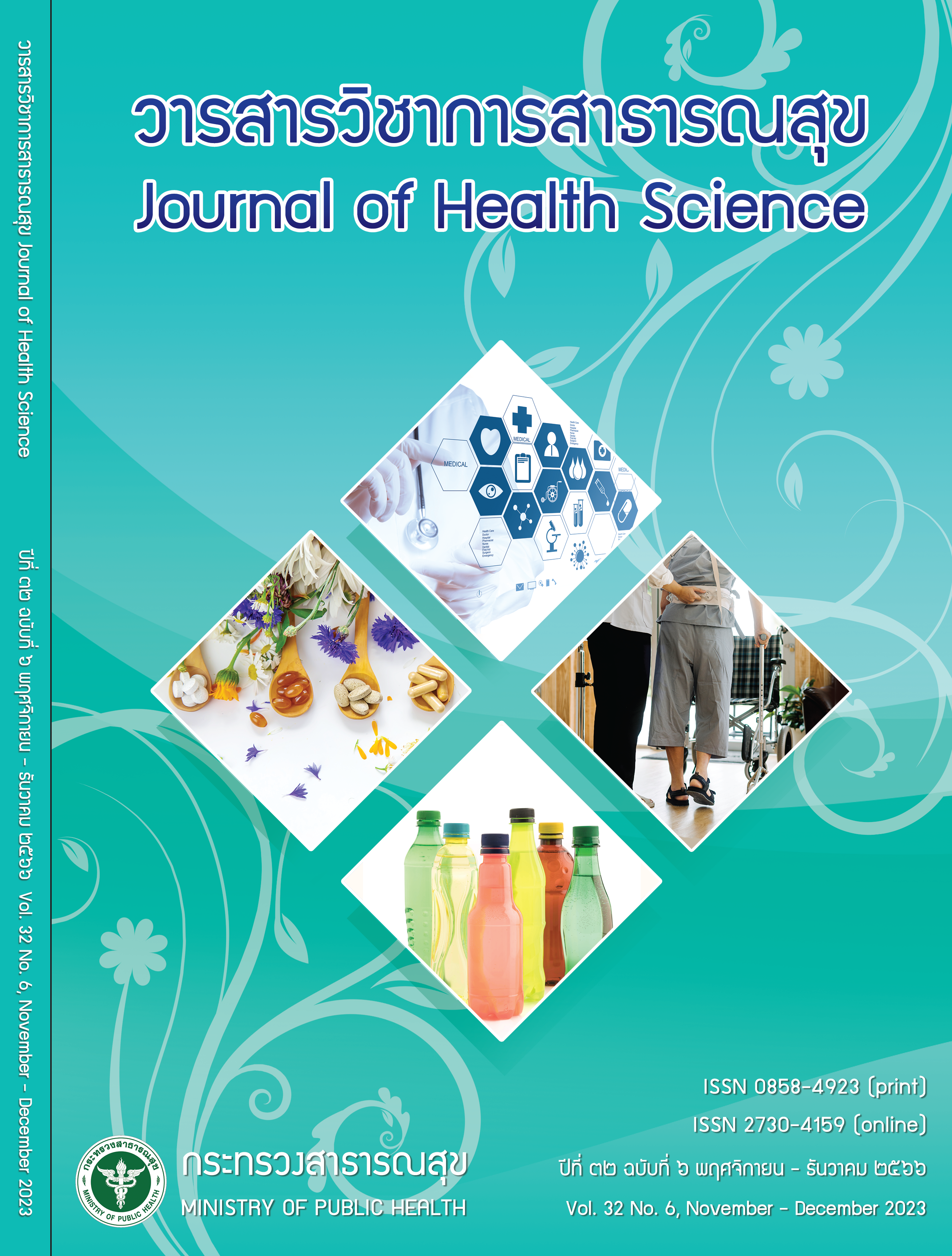Device for Pneumatic Reduction of Intussusception
Keywords:
device for pneumatic reduction of intussusception, intussusception, treatment of intussusceptionAbstract
The objective of this study was to develop a pneumatic device which could be used with ultrasound for the diagnosis and treatment of intussusception. The research process began with reviewing the research and the documents related to intussusception treatments. The researcher also observed the devices that were available in the local hospitals and learned how the devices operated. The broken devices, which could be used as a part of pneumatic machine, such as pressure gauge, were amended to allow them to work with the pneumatic device. The pneumatic device, developed at Mahasarakham Hospital, was found to offer a satisfactory level of intussusception treatment. This was observed in the cases of two patients, for which different controls of the device were applied. The first patient was treated entirely with the application of the pneumatic device with the pressure set at 90 mmHg. The second patient had previously been treated unsuccessfully using the hydrostatic reduction method. For this experiment, the second patient was treated by using a combination of both hydrostatic reduction and the pneumatic device, which was set at a pressure level of 100 mmHg. The techniques used for both patients were effective, based on the fact that the patients did not have to undergo operations. The pneumatic reduction that was developed for this research was found to be effective for providing intussusception treatments. Moreover, the device was able to protect the patients from having to indulge in radiological treatments. The risk of infection was lessened because the patients did not have to be exposed to barium sulfate used in the conventional ultrasound diagnosis. Because this pneumatic device could be developed from a medical device that was already available at the hospital, the instrument could be invented at low cost and be effectively utilized.
Downloads
References
Brain Coley. Caffey’s pediatric diagnostic imaging. 12th ed. Philadelphia: Saunders; 2013.
Kuta AJ, Benator RM. Intussusceptions: hydrostatic pressure equivalents for barium and meglumin sodium diatrizonate. Radiology 1990;175:125-6.
Kritsaneepaiboon S, Sangkhathat S, Kanngum S. Pneumatic reduction of intussusception: factors affecting outcome in Thailand, Faculty of Medicine, Prince of Songkla Universiy, Hat Yai 90110, Thailand. Asian Biomedicine 2011;5(2);235-41.
Hassan OB, Frees SN, Ibrahim M. Ultrasound guide pneumatic reduction of intussusception in children – a case series. Int J Recent Sci Res 2015;6(5):4204-7.
Tang P, Law EK, Chu WC. Pneumatic reduction of paediatric intussusception: clinical experience and factors affecting outcome. Hong Kong J Radiol 2016;19:200–7.
Downloads
Published
How to Cite
Issue
Section
License

This work is licensed under a Creative Commons Attribution-NonCommercial-NoDerivatives 4.0 International License.







